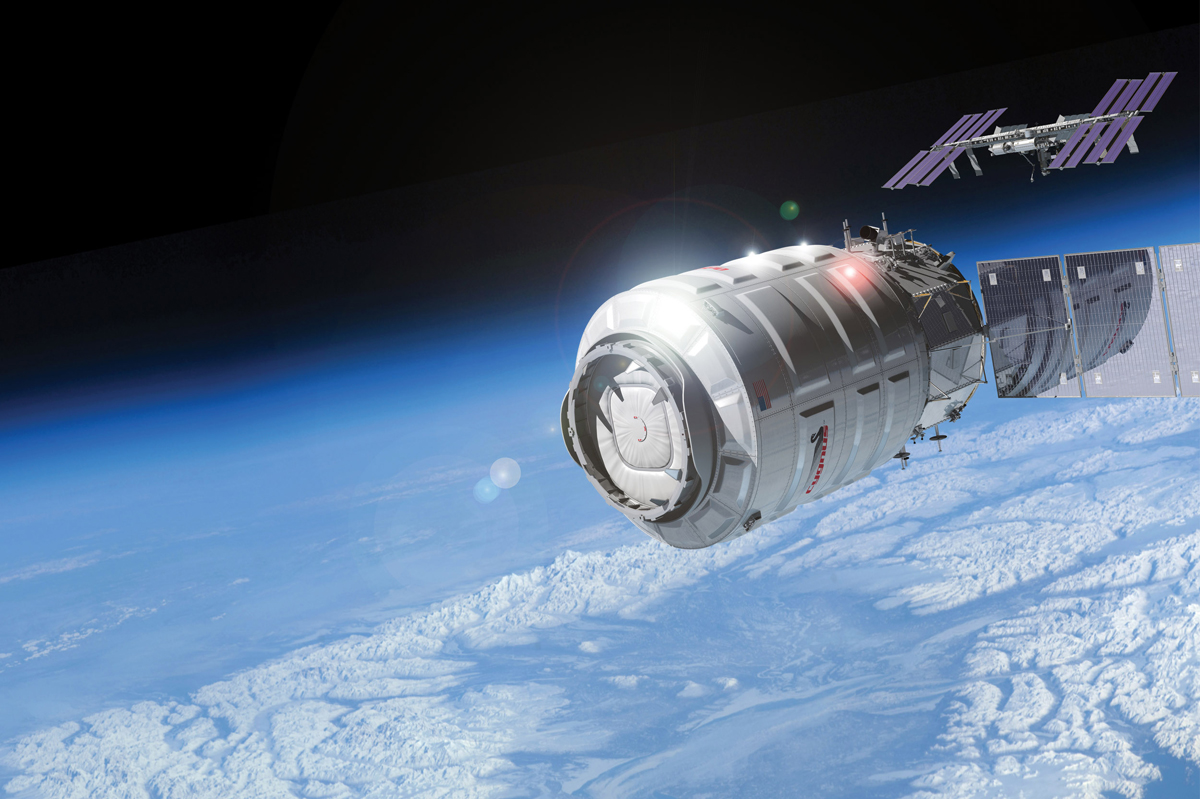How to Spot the Private Cygnus Spacecraft, Space Station in Pre-Dawn Sky

Early-bird skywatchers across parts of the United States and southern Canada have several chances to spot the new private Cygnus spacecraft as it chases the International Space Station across the pre-dawn sky.
The first Cygnus spacecraft launched into orbit Wednesday (Sept. 18) from Wallops Island, Va., and is slated to arrive at the space station Sunday morning (Sept. 22) at 7:25 a.m. EDT (1125 GMT). So by Monday morning, both spacecraft will appear as a singular bright moving "star" across the night sky.
The space station makes one full orbit of the Earth in approximately 93 minutes. The Cygnus spacecraft, which is built by the commercial spaceflight company Orbital Sciences Corp., initially trailed the station by about 35 minutes after the Wednesday launch. By Friday morning, that gap will have diminished to less than five minutes, while on Saturday and Sunday mornings it will be one minute or less. [See amazing launch photos of Orbital's Cygnus spacecraft]
This means that, weather permitting, it will be possible to see both space vehicles in the sky at the same time. Observers will see the space station appear first, followed closely by Cygnus traveling along basically the same path.
How bright will they be?
Most satellites in space are visible from the ground only when they are in sunlight and the observer is in deep twilight or darkness. This usually means shortly after dusk or before dawn.
The International Space Station is about as long as a football field and flanked by huge, wing-like solar arrays, making it the largest artificial structure ever built in space. Because of its size highly reflective solar panels, the station is also the brightest man-made object currently in orbit around the Earth.
Breaking space news, the latest updates on rocket launches, skywatching events and more!
On favorable passes, the space station can shine as brilliant as the planet Venus and appear more than 25 brighter than Sirius, the brightest star in the night sky. Some observers even caught a glimpse of the space station just prior to sunset or shortly after sunrise. And as a bonus, sunlight glinting directly off the solar panels can sometimes make the station appear to briefly flare to super-brilliance.
Orbital Sciences' Cygnus spacecraft on the other hand, is a smaller unmanned cargo ship for the station developed by Orbital Sciences Corp. as part of NASA's Commercial Orbital Transportation Services program.Cygnus is much smaller than the Space Station, measuring about (17 feet (five meters) long and 10 feet (3 m) wide, with highly reflective solar panels.
Because of that size difference, Cygnus will usually appear much dimmer compared to the ISS. Seen from a distance of 621 miles (1,000 km) and 50 percent illuminated, it should appear roughly as bright as a third magnitude star and can be categorized as of moderate brightness.
For comparison, the star Megrez, which joins the handle with the bowl of the Big Dipper is a third magnitude star. This would make the Cygnus spacecraft capsule about 1,500 times dimmer than the space station!
On rare occasions, when Cygnus is passing much closer – about 260 miles (420 km) and is 100-percent illuminated, it can appear to briefly shine at a far more dazzling magnitude of -2.6; that’s as bright as Jupiter. But such favorable circumstances occur infrequently at best, so when you’re watching for it you should expect to see a dimmer object.
When and where to look
So what is the viewing schedule for your particular hometown? You can easily find out by visiting one of these three web sites:
Each website will ask for your zip code or city, and respond with a list of suggested spotting times. Predictions computed a few days ahead of time are usually accurate within a few minutes. However, they can change due to the slow decay of the space station's orbit and periodic reboosts to higher altitudes. Check frequently for updates.
Another great site is this one: http://www.n2yo.com/?s=25544. It provides real-time satellite tracking and shows you at any given moment during the day or night over what part of the Earth the space station or Cygnus happens to be.
Editor's Note: If you snap a photo of Orbital Sciences' Cygnus spacecraft in space, the International Space Station or any other amazing sky view that you'd like to share for a possible story or image gallery, send photos, comments and your name and location to managing editor Tariq Malik at spacephotos@space.com.
SPACE.com is providing complete coverage of Orbital's first Cygnus test flight to the International Space Station. Visit SPACE.com for updates on the mission. SPACE.com partner Spaceflight now is also offering updates via its Cygnus Mission Status Center.
Email Tariq Malik at tmalik@space.com or follow him @tariqjmalik and Google+. Follow us @Spacedotcom, Facebook and Google+. Original articleSPACE.com.
Joe Rao serves as an instructor and guest lecturer at New York's Hayden Planetarium. He writes about astronomy for Natural History magazine, the Farmer's Almanac and other publications, and he is also an on-camera meteorologist for News 12 Westchester, N.Y.Follow us @Spacedotcom, Facebook and Google+. Original article on SPACE.com.

Joe Rao is Space.com's skywatching columnist, as well as a veteran meteorologist and eclipse chaser who also serves as an instructor and guest lecturer at New York's Hayden Planetarium. He writes about astronomy for Natural History magazine, Sky & Telescope and other publications. Joe is an 8-time Emmy-nominated meteorologist who served the Putnam Valley region of New York for over 21 years. You can find him on Twitter and YouTube tracking lunar and solar eclipses, meteor showers and more. To find out Joe's latest project, visit him on Twitter.

